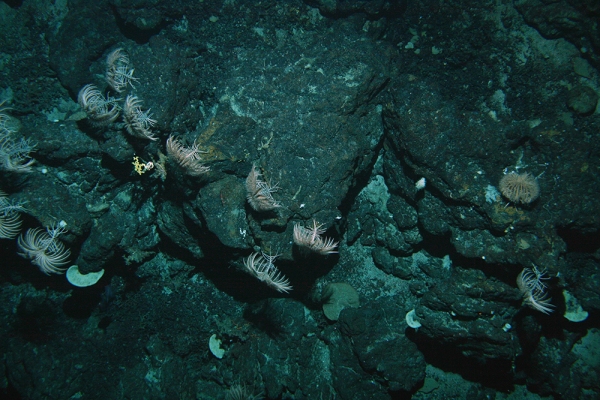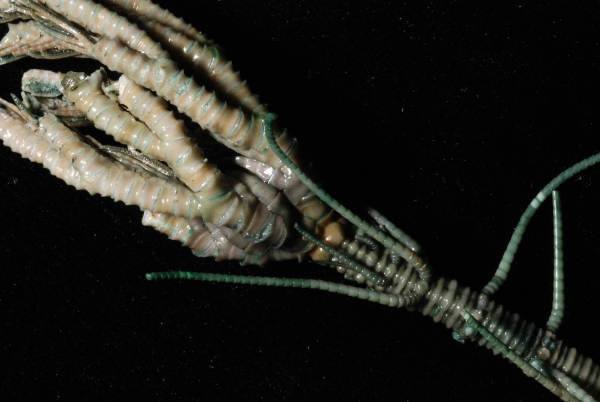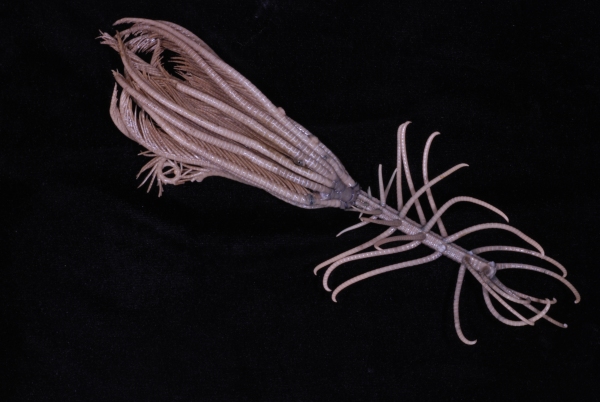If you are a fan of crinoids (and who isn’t) you might enjoy this short documentary (27mins), Living Fossils, which features our friend Charles Messing from Nova Southeastern University.
Charles and colleagues have been carrying out research on crinoids via a small deep-diving submersible (built and piloted by Karl Stanley) in the Caribbean for the last three years. You can watch the short documentary using the link below.
Inspired by this broadcast we thought for this week’s critter we would revisit the beautiful stalked crinoids – Isocrinidae.
Living isocrinids are derived from ancient forms which were once extremely diverse and dominant in the seas of the Paleozoic and Mesozoic (so up to 500 million years ago). Crinoids are often considered living fossils.
These days they are entirely restricted to deep water, and around New Zealand seas only nine species have been recorded.
Although they may be locally abundant in some environments isocrinids are rarely caught – NIWA has only about 40 specimens registered in the NIWA Invertebrate Collection (NIC). The above group of isocrinids were photographed in 2012 on a seamount in the Bay of Plenty in 840 m. [NIWA, Deep Sea Communities.]
Part of the reason for the rarity of isocrinids is the depth at which they live. All species live in water several hundreds of metres deep; the shallowest in the NIC was collected from a depth of over 300 m and the deepest from nearly 2000 m.
The beautifully ornate skeletal structure of isocrinids is nicely shown in the aboave image of Metacrinus wyvilli collected from the Kermadec Ridge in about 1020 m.
Isocrinids are easily distinguished from other stalked crinoids by the whorls of segmented hook-like appendages (cirri) which occur at intervals along the stalk. They use these cirri to anchor themselves to the substrate - but can release them in order to move up and down in the water column or to move along the substrate which they do by crawling with their arms.
Here is a great video of a crawling crinoid.
The (as yet unidentified) specimen photographed above was taken from the same depth in the Bay of Plenty as the in-situ image above – and is likely to be the same species. [NIWA, Ocean Survey 20/20, Mapping the Mineral Resources of the Kermadec Arc Project].
Check out the echinoblog for some more interesting factoids on this fascinating group of echinoderms:



